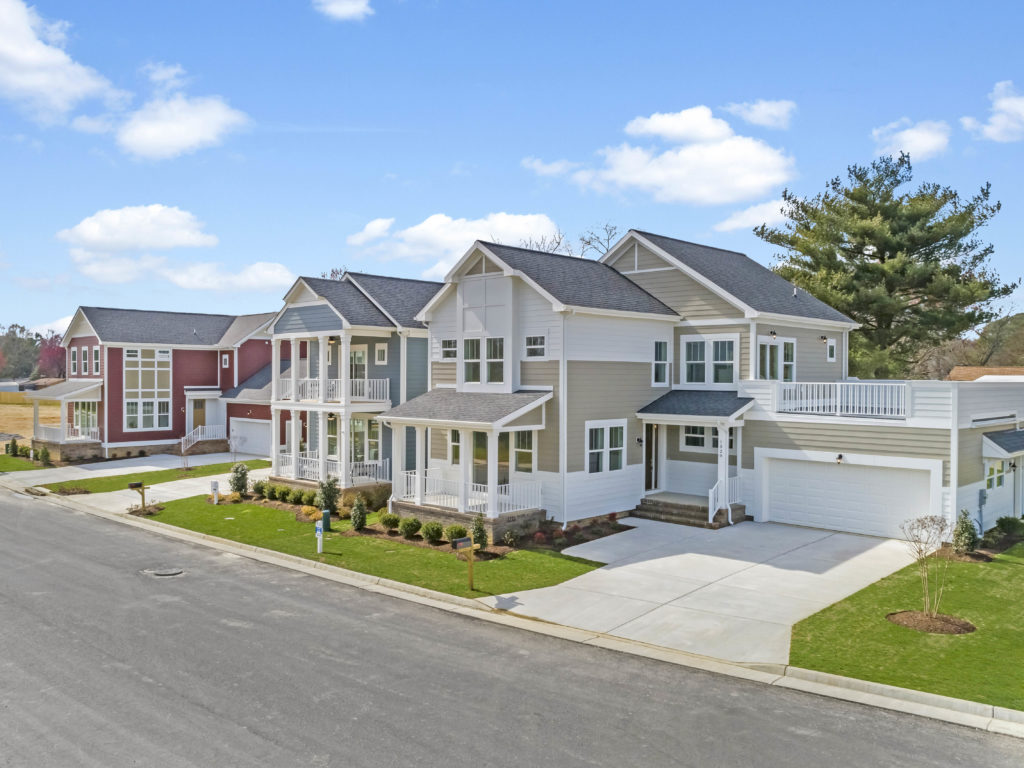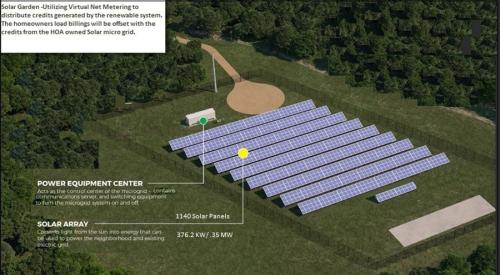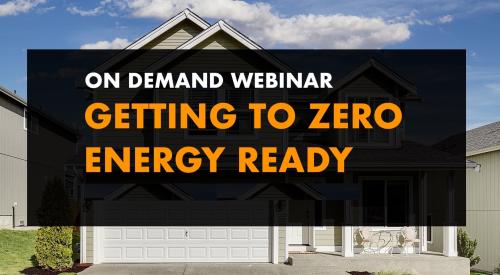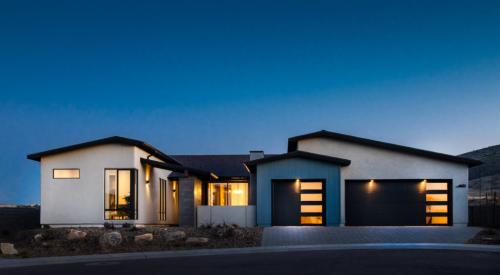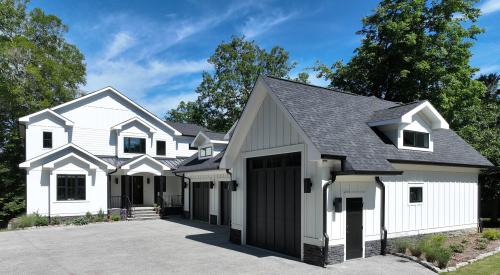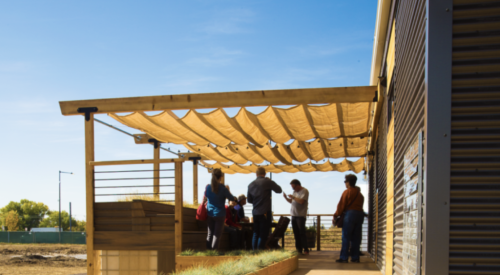It takes a lot to make a Healthy Communities home a “zero energy ready” home.
A winner of the 2020 Department of Energy Zero Energy Ready Home (ZERH) Housing Innovation Award in the Production Homes category, the Virginia builder’s second community, Walnut Farms, uses an array of energy-efficient construction materials and methods.
Located in Williamsburg, Va., Walnut Farms’ 75 homes use ZIP System exterior sheathing and flash-and-batt insulation to create an R-value that far surpasses the minimal code requirement. “It’s like wrapping the house with a blanket. We create a thermos effect in the house,” says Healthy Communities owner Jay Epstein. “So the home stays warmer in the winter and cooler in the summer.”
Walnut Farms’ homes also feature argon gas-filled windows with a transparent, low-emissivity coating that reflects heat outward and keeps the glass cool.
Inside the homes, variable-speed Trane air conditioners can ramp up or down to maintain a constant temperature. “It’s like cruise control on your car,” Epstein says.
RELATED: 7 Steps to Building Net-Zero-Ready Production Homes, From an Award-winning Builder
—Jay Epstein, owner, Healthy Communities
What are Net Zero Homes?
Net-zero homes involve the use of renewable energy systems to heat and power a home. The goal is to reach a result in which the home provides the power it needs for the homeowner, while producing almost zero waste in return. There are many ways to nudge homeowners in the direction of net zero waste, such as using solar panels for electricity, smart devices to regulate air conditioning, or making sure the insulation around windows is tight.
In the case of Walnut Farms' houses, structured plumbing has been installed, with a pump that recirculates water back to the hot water heater so that far less water goes down the drain while it’s heating up. The plumbing system saves about 8,000 gallons of water per home per year. Healthy Communities also features Panasonic’s Energy Recovery Ventilator, which filters the air coming into the zero energy homes.
Walnut Farms homes boast Home Energy Rating System (HERS) scores in the mid-40s—well below the DOE program’s requirement of HERS scores in the low- to mid-50s.
In addition, Walnut Farms offers the option of solar power. And solar is what can take its properties from zero energy “ready” to zero energy.
Through net metering, the utility provider credits Walnut Farms homeowners for the energy their rooftop solar panels add to the grid. Healthy Communities guarantees that homeowners who install solar will have an average utility bill of just $1.50 per day over the course of a year. The builder also guarantees that, over five years and four months, homeowners’ utility savings will offset the $14,500 that Healthy Communities charges to install each home’s 18 rooftop panels.
Net-Zero Energy Homes Can Be Profitable For Builders
How does Healthy Communities provide all the energy-efficient features while still turning a profit? To offset the costs of those features, Epstein says his company finds savings during the design phase and in the materials. “As long as you value-engineer your design and you know your building material costs, you can build this at zero cost increase,” he says.

Healthy Communities works with Digibilt, a company that digitizes and automates the building process, to design its homes virtually and identify savings. For instance, the builder might decide during the design to use a slightly smaller window. Buyers might not notice the difference in the window’s size, but the savings add up. Or if Healthy Communities’ siding subcontractor provides a quote that includes an industry-standard 20 percent overage, Healthy Communities can demonstrate its design will have only 10 percent waste and negotiate with the siding company for a lower bid.
It all results in net-zero homes that Epstein says are easier to heat and cool, and easier to breathe in and live in. Epstein recalls two people, one asthmatic and the other with allergies, who said they did not realize they were not wheezing or sneezing while they were inside a Walnut Farms home, until they left it. It’s that experiential quality that Epstein and his company emphasize—not U-values, R-values or MERV values, terms that he maintains don’t mean much to the average homebuyer. “We talk about how the homeowner interacts with the home,” he says.
Technology Drives Innovation in Healthy Homes
Walnut Farms benefits from building technology that has come a long way since Healthy Communities’ first development, Villas at Rocketts Landing in Richmond, Va., built in 2014. The 45 solar-powered single-family homes in that community were limited by the technology of the time.
“We didn’t have the best equipment back then,” Epstein says. For instance, to maintain energy efficiency, a Villas house couldn’t have a room above a porch or garage. A Walnut Farms house can.
The advances have come about, Epstein explains, through the partnerships he has developed with manufacturers over the past several years. Thanks to those partnerships, the manufacturers can provide Healthy Communities with the building components it needs at a reasonable cost—components that aren’t stocked by local distributors.

Healthy Communities intends to up its game once again for its next community, Solara Woods, outside Williamsburg. Instead of rooftop panels, homeowners will pay the same $14,500 fee but instead draw their power from a solar garden with 1,100 panels. That’s been enabled by a recent change in Virginia law, which will no longer confine net metering to only one contiguous property owned by one person.
Walnut Farms had to clear the area of trees to allow sunlight to reach its solar panels. But with one solar garden, Solara Woods, as its name suggests, aims to show that solar and trees can live happily, healthily together.
Flyover of the Grand Opening of the Walnut Farms


